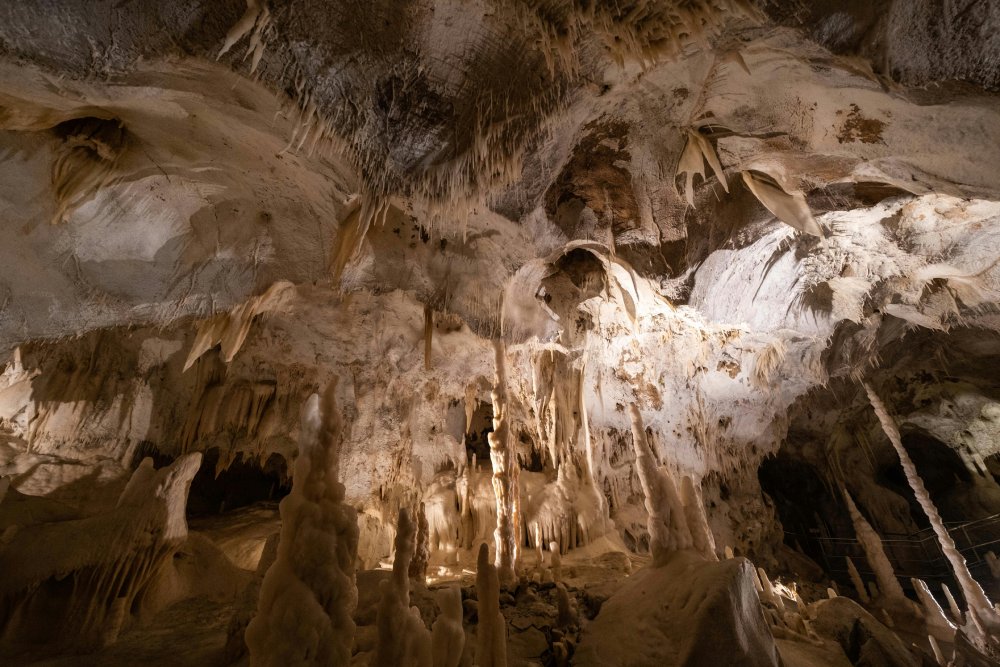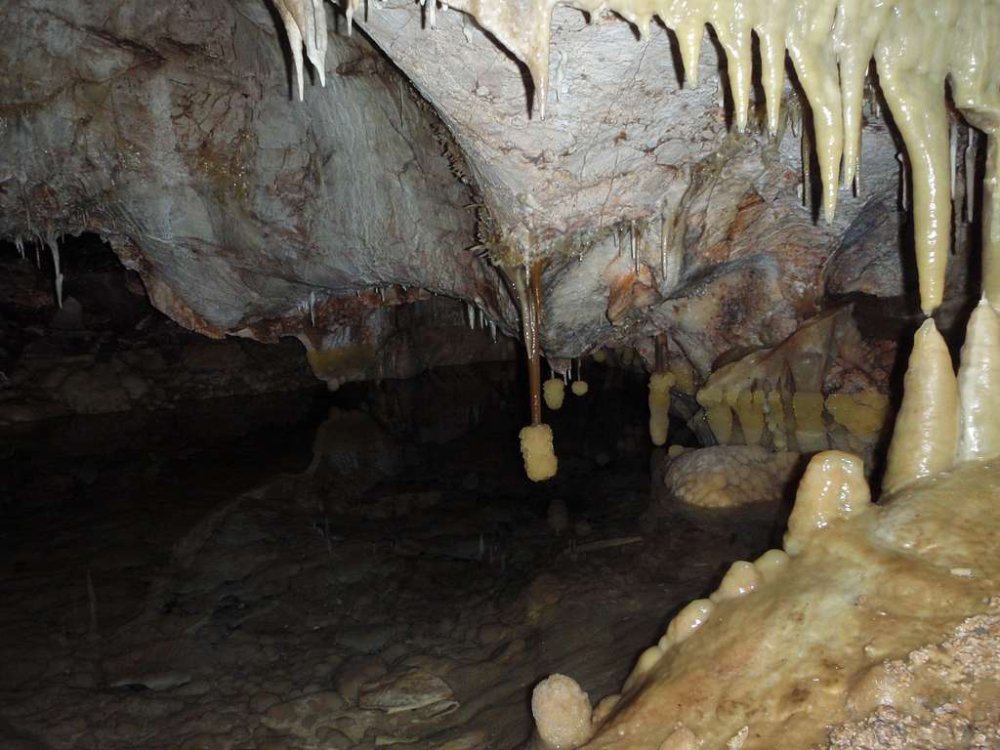One of the first things one may notice when entering a cave is the amazing formations that rise from the floor or hang from the ceiling. These structures, called stalactites and stalagmites, are the centuries-old sculptures found in nature. However, precisely what are they? To put it simply, stalagmites grow upward from the cave floor, whereas stalactites hang from the ceiling like icicles. These formations tell a story of time, water, and minerals coming together to create something beautiful in addition to being fascinating to look at.
It can be difficult to comprehend these formations, though. Many find it difficult to recall which one grows from the ground and which one hangs from the ceiling. Additionally, it can be annoying to try to clarify the differences with other people. Don’t worry if you’ve ever experienced that; you’re not alone! It’s a common mistake that can add a little difficulty to cave exploration.
The good news is that you won’t forget the distinction once you’ve discovered it. Not only will we define stalactites and stalagmites in this post, but we’ll also offer some easy memory tricks. You’ll have a newfound respect for these amazing natural formations by the time you’re ready to explore caves. Now let’s get started!

What Are Stalactites and Stalagmites?
Let’s define these formations first before delving into their specifics. Speleothems, an elegant term for cave formations, include stalagmites and stalagmites. Both are formed from mineral deposits left by dripping water, mainly calcium carbonate.
Stalactites form when water drips from the ceiling of a cave. Over time, as the water evaporates, it leaves behind tiny deposits of minerals. These deposits accumulate, growing downwards, creating the iconic “icicle” shape that we often see hanging from cave ceilings.
Stalagmites grow upwards from the cave floor. They form from the minerals left behind when water drips onto the ground. Unlike their ceiling-dwelling counterparts, stalagmites are more likely to be rounded or even conical in shape, depending on how the water drips.
The Formation Process
- Water Seeps Through Rock Layers: Rainwater trickles down through the ground, absorbing carbon dioxide and becoming slightly acidic.
- Water Dissolves Minerals: As the acidic water seeps through limestone or other mineral-rich rocks, it dissolves minerals, particularly calcium carbonate.
- Water Drips into a Cave: When this mineral-rich water reaches a cave, it drips from the ceiling, leaving behind a tiny deposit of minerals.
- Formation Begins: Over time, these deposits build up, forming stalactites on the ceiling and stalagmites on the floor.
- Continuous Growth: The process continues, with stalactites growing downward and stalagmites growing upward. Sometimes, they meet to form a column.
Read about the fascinating world of Boxwork Calcite.
Why Do We Confuse Them?
Because stalactites and stalagmites are closely related and frequently found in the same cave, it is easy to confuse them. Their similar names and looks frequently cause confusion, but there’s an easy way to remember which is which: The letter “c” stands for ceiling in stalagmites, and the letter “g” for ground. When you’re trying to keep them clear in your mind, this tiny memory tool can help.
Stalactite and Stalagmite: Beyond Just Rocks
The attraction these formations hold for a great number of us extends beyond their names. The patient and slow process of nature is demonstrated by stalagmites and stalagmites. They serve as a constant reminder of time passing and how, over many years, even the tiniest actions, like a drop of water, can produce something amazing. This viewpoint can be humbling, particularly when we consider how modest but persistent efforts can make big differences in our own lives.

People Usually Ask
What is the difference between stalagmite and stalactite?
The location and growth direction of stalactites and stalagmites differ from one another. A cave’s ceiling is covered in stalagmites, which are deposits left over time by mineral-rich water that cascades from the ceiling. On the other hand, stalagmites, which are created by water dripping down and depositing minerals below, grow upward from the cave floor. Recall that stalagmites “might” eventually reach the ceiling, while stalactites hold “tight” to the ceiling.
What is the purpose of stalagmites?
Stalagmites don’t have a purpose in the way we might think of it, but they do play an essential role in the natural history of caves. They help scientists understand the cave’s environment, including the climate and water conditions over thousands of years. Stalagmites, along with stalactites, are also crucial for studying the earth’s history, as they can provide valuable information about past climates.
Can you touch stalagmites?
While it might be tempting to touch stalagmites, it’s best not to. The oils and dirt from our hands can disrupt the delicate growth process and cause damage that takes hundreds or even thousands of years to repair. In many caves, touching formations is strictly prohibited to preserve their natural beauty and allow them to continue growing undisturbed.
What color are stalagmites?
Stalagmites can vary in color depending on the minerals present in the water that forms them. Common colors include white, cream, and shades of brown, but they can also be tinted with reds, oranges, or even greens depending on the mineral content. For example, iron can add a reddish hue, while copper can create greenish tones.
Conclusion
Stalactites and stalagmites are more than just interesting cave formations—they are reminders of the incredible power of nature and the slow, steady work of time. By understanding how they form and recognizing their differences, we gain a deeper appreciation for these natural wonders. The next time you step into a cave, take a moment to admire the stalactites hanging from the ceiling and the stalagmites growing from the ground, knowing that you are witnessing something truly extraordinary.
